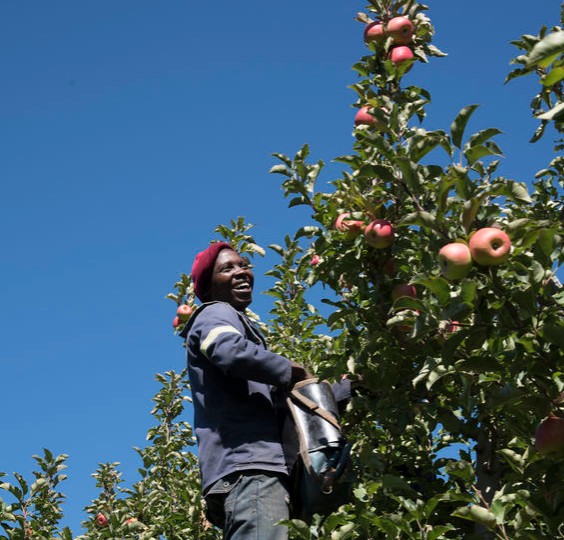
In a recent feature article published by the New York Times, the story of the Jamaicans who travel to upstate New York under the H-2A program for agricultural work is told. Seth Forrence, 41 and a fourth-generation manager of Forrence Orchards, the family apple farm in Peru, New York, says the Jamaican workers are like part of the family. The farm foreman, James “Jimmy” Spence, has been with Forrence for 32 years.
New York is the second-biggest producer of apples in the United States. The New York Apple Association places the total number of pounds of apples produced each year at over one billion. Jamaicans have been picking fruit in the region’s orchards since World War II, taking advantage of the narrow August-through-October “picking window.” Foreign workers, including hundreds of Jamaicans every year, come into the US on H-2A visas designed to bring in temporary agricultural labor. Forrence Orchards hired 186 Jamaicans for the 2017 season.
Jamaica’s Ministry of Labor selects the workers for Forrence Orchards, and they are then approved by the US government, receiving their visas at the US Embassy in Kingston. The workers travel by air to Fort Lauderdale in Florida and then on to New York by bus.
The workers at Forrence are paid $12.38 per hour before state and federal taxes. The rate is established by the Federal Department of Labor and is higher than New York’s minimum wage of $11. It is also much more than what the Jamaicans can earn on their home island. At the season’s end, many of the Jamaican workers ship 55-gallon drums filled with goods back to the island for use by their families or to sell. The orchard provides free housing, and it offers two commissaries with Jamaican chefs who prepare three meals a day for the workers, charging $12.07 a day. Jerk chicken is served every Wednesday. In their free time, the Jamaican workers play dominos, watch television, talk with their friends, and drink beer.
The Jamaican worker program is critical to the success of Forrence Orchards where labor represents the greatest expense. Each year, the Forrence family attempts to find local workers to pick their apples as the H-2A program requires them to do before bringing in any foreign workers. In 2017, only one qualified individual replied to their advertisement and then did not last until harvest season.
Source: New York Times







